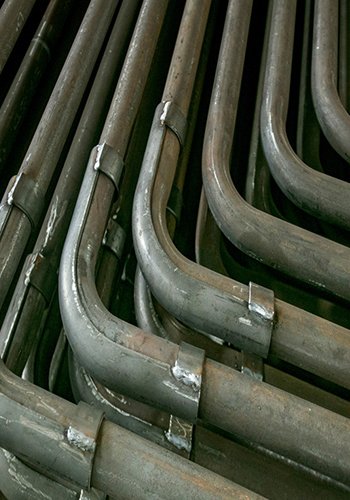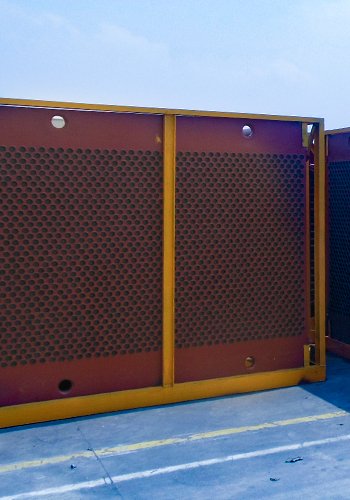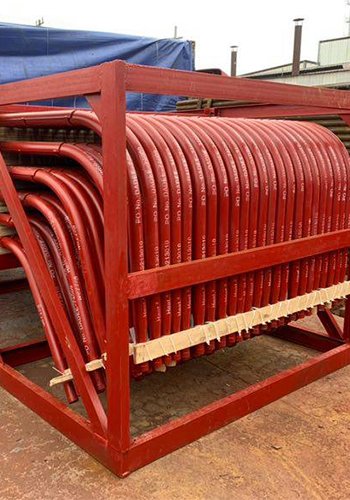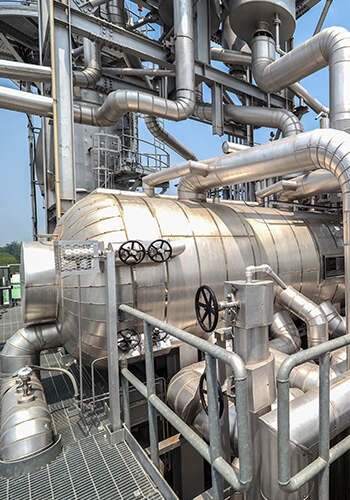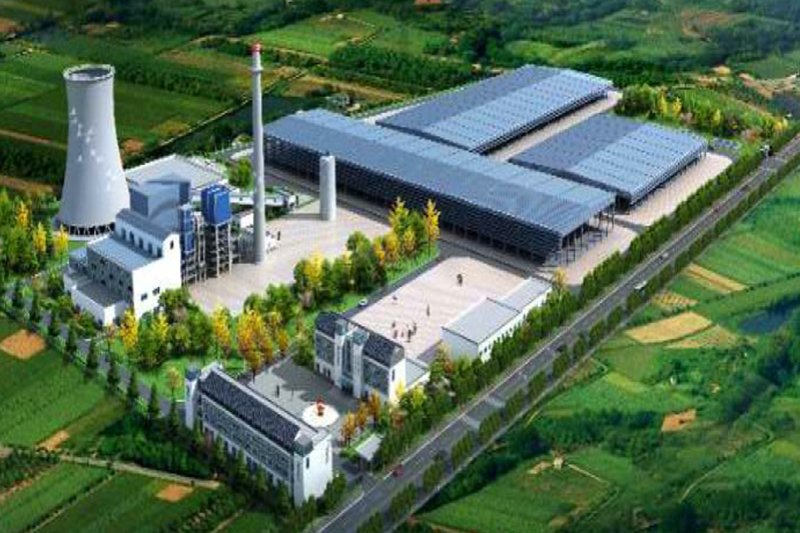The coal economizer, positioned at the tail end of the boiler convection flue, plays a crucial role in harnessing flue gas waste heat to elevate feed water temperature. This process effectively lowers exhaust temperature and enhances the thermal efficiency of the boiler. Within the framework of Hongwei Thermal Power Plant’s five boilers, the coal economizers of furnaces 1#, 2#, and 3# are single-stage devices situated in the tail shaft. They feature a countercurrent and staggered arrangement of water and flue gas. The flue gas outlet temperature is approximately 320℃, and the design speed is set at 7.2m/s. As for furnaces 4# and 5#, their economizer adopts a double-stage, countercurrent structure located in the tail flue with a staggered row arrangement. The upper stage economizer employs a serpentine pipe configuration with specifications Φ32×4mm, utilizing 20G steel pipes. Its flue gas outlet temperature is 374℃, while the lower stage registers an outlet temperature of 267℃, with a flue gas flow rate of 7.1m/s.
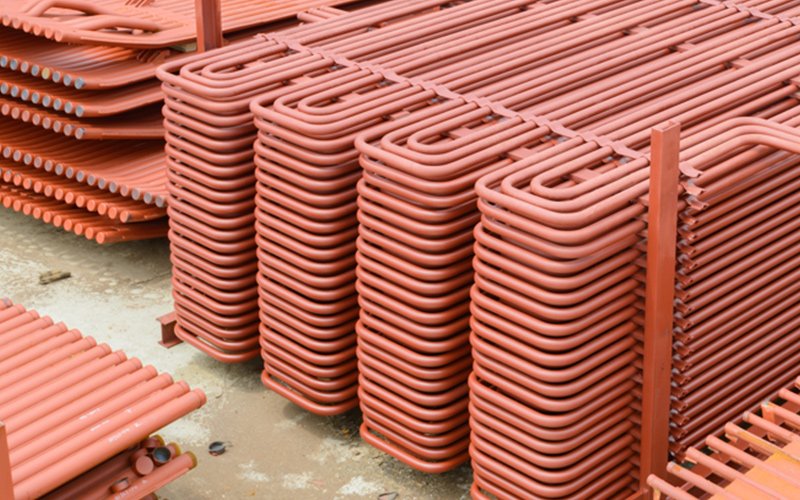
In recent operational years, frequent economizer leakages have led to forced shutdowns, disrupting power generation, heat supply, and steam supply tasks. The prolonged start-stop cycles result in increased operational costs and pose a threat to the overall service life of the boiler equipment. Therefore, it is imperative to implement measures to safeguard the economizer during operation, minimizing leaks, and reducing the occurrences of furnace shutdowns, thereby significantly impacting operational efficiency.
Analysis of the Causes of Economizer Leakage
The occurrence of coal furnace economizer leakage can be attributed to fly ash abrasion, tube corrosion, low-temperature corrosion, and over-temperature burst tube. Fly ash abrasion results from the impact and cutting of pipe walls by particles carried in the flue gas. Tube corrosion is caused by an excess of oxygen content in the water, along with heat-induced precipitation of dissolved oxygen. Low-temperature corrosion is associated with the reaction of sulfur oxides, nitrogen oxides, and water vapor in the flue gas, leading to acid corrosion. Over-temperature burst tubes result from localized overheating and inadequate cooling.
In recent years at Hongwei Thermal Power Plant, coal economizer leakage incidents have predominantly occurred in the serpentine tube rows near the back wall and both sides of the furnace wall. These areas are particularly susceptible to wear. Leakage in the serpentine tube rows near the back wall is attributed to the flue gas re-entering the shaft flue before making a 90° turn in the horizontal flue. Under the influence of centrifugal force, a substantial amount of ash particles accumulates on the shaft flue wall, causing increased wear on the serpentine tube rows near the back wall and subsequent leakage. The gap between the elbow of the economizer pipe and the walls on both sides of the shaft flue forms a flue gas corridor with less resistance, resulting in higher flue gas flow rates and more severe wear. Therefore, the key challenge in preventing economizer leakage at our plant is minimizing flue gas wear on the economizer.
Wear Mechanism
The wear on the economizer’s heated surface is driven by the impact of fly ash particles carried by the flue gas. These particles, possessing a certain speed and power, strike the pipe wall, causing varying degrees of damage with each impact. The collision results in the removal of extremely small metal chips from the pipe wall. Through continuous impacts, the fly ash gradually thins the pipe wall, leading to abrasion. There are two distinct types of wear based on the direction of movement of the ash particles and the angle at which they impact the surface.
When ash particles impact the furnace tube at close to a 90° angle, a plastic deformation layer forms on the tube surface. This deformation layer undergoes repeated impacts from the ash particles, resulting in impact wear. In cases of oblique impact, the impact force can be divided into normal force and tangential force components. The normal force causes impact wear, while the loss of tangential force leads to cutting wear. Downstream impact causes scouring wear. Understanding these wear mechanisms is essential for addressing the challenges of economizer wear and devising effective preventive measures.
Improvement Measures
2.1 Ensure Optimal Flue Gas Velocity
The designed economizer flue gas velocity at our plant under rated load is 7.1 m/s. However, operational deviations from the rated load are common, necessitating adjustments in boiler suction and supply air volumes. It is crucial to control the excess air coefficient appropriately to reduce flue gas velocity and safeguard the economizer. Formula (1) allows for the reduction of smoke speed, significantly minimizing wear and tear. Nevertheless, the smoke velocity should not drop below 5 m/s, as excessively low velocities can exacerbate ash accumulation on the heated surface, reducing the flue gas circulation area and causing uneven distribution of flue gas flow rates. This, in turn, increases smoke velocity and wear in specific locations. Strengthening the soot blowing effect of the economizer is essential to diminish ash buildup and expand the circulation area.
Simultaneously, it is imperative to avoid overloading during operation, as increased loads elevate flue gas flow rates, intensifying the wear on pipe walls due to heightened ash particle transport. Operators should focus on reducing exhaust temperature during runtime, often achieved by augmenting induced air amounts. However, this practice can exacerbate wear and tear on the coal economizer and should be carefully managed.
2.2 Reduce Ash Hardness
The economizer, situated in the tail flue, experiences an increase in ash hardness as the flue gas temperature decreases. When the temperature of fly ash drops below 700℃, ash particles begin to harden. Additionally, unburned coal particles, with significantly higher hardness than ash, enter the tail flue along with the flue gas, causing severe wear on the pipe wall. To mitigate this, it is essential to control the fineness of the coal dust entering the furnace and make reasonable adjustments to combustion to prevent unburned particles from reaching the tail flue. This preventive measure can effectively reduce wear on the coal economizer.
The direct-blowing pulverizing system at Hongwei Thermal Power Plant employs a fan mill with only one coarse powder separator. Over time, the striking ability of the striking plate decreases, and the powder return pipe may become clogged, leading to an increase in coal powder fineness and the number of particles entering the tail. Therefore, implementing a robust inspection system and adjusting the coal powder fineness at the mill outlet in accordance with the fan mill’s operational characteristics can minimize the entry of unburned coal powder into the tail, enhancing boiler combustion efficiency.
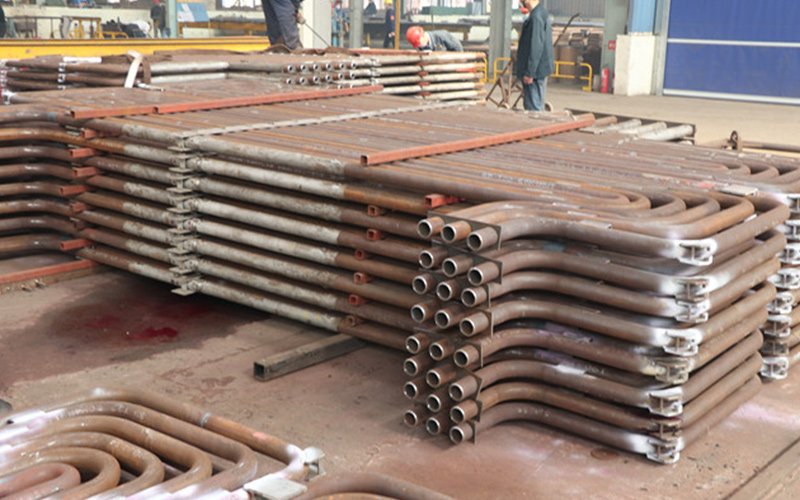
2.3 Reduce Ash Accumulation in the Tail Section
The flue gas flow rate in the ash pipe is small and at a low temperature, causing water vapor in the flue gas to condense, and the ash may even freeze, leading to blockages in the ash pipe. This obstruction prevents timely ash discharge, allowing ash to accumulate in the tail section, and some fly ash may even form circles in the ash hopper, resulting in repeated impacts on the pipe wall. Installing electromagnetic vibrators on the ash fall pipe can prevent the cohesion and blockage of fly ash, facilitating the timely discharge of accumulated fly ash into the gutter. This measure effectively reduces the presence of ash in the flue gas, especially minimizing the impact and wear on the coal economizer, particularly from large-diameter particles.
2.4 Strengthen Soot Blowing
Accumulated ash in the economizer adversely affects heat transfer, flue gas circulation, causes thermal deviation, uneven smoke speed, and increases the power consumption of the suction fan. Ash accumulation generally initiates on the windward and leeward surfaces of the pipeline, expanding and gathering over time, ultimately obstructing the flue gas circulation channel. The current soot blowing device at our plant, with a flat circular or elliptical sphere radiation direction and a radius of action less than 3m, does not effectively address horizontal soot accumulation in the economizer.
To enhance soot blowing effectiveness, consider installing steam explosion-type shock wave soot blowers in the tail flue. These devices utilize compressed air in a straight line to remove soot accumulation in the horizontal direction, preventing the gathering of fly ash.
Conclusion
The coal economizer plays a vital role in industrial boilers, and economizer leakage has emerged as a significant factor impacting normal boiler operation. Protecting the coal economizer during operation and minimizing both leakage incidents and the frequency of furnace shutdowns hold paramount importance in achieving energy conservation and emission reduction goals. This paper has presented a set of improvement measures based on the analysis of coal economizer leakage incidents observed in recent years at Hongwei Thermal Power Plant. Implementing these measures is essential for enhancing the overall efficiency and reliability of the boiler system, contributing to the broader objectives of energy efficiency and environmental sustainability.
DHB Boiler
Discover The Superior Quality And Cutting-Edge Technology Of DHB Boilers. Explore Our Range Of Biomass Boilers, Waste Heat Boilers, And More. Take Your Industrial Operations To New Heights With DHB Boiler.
